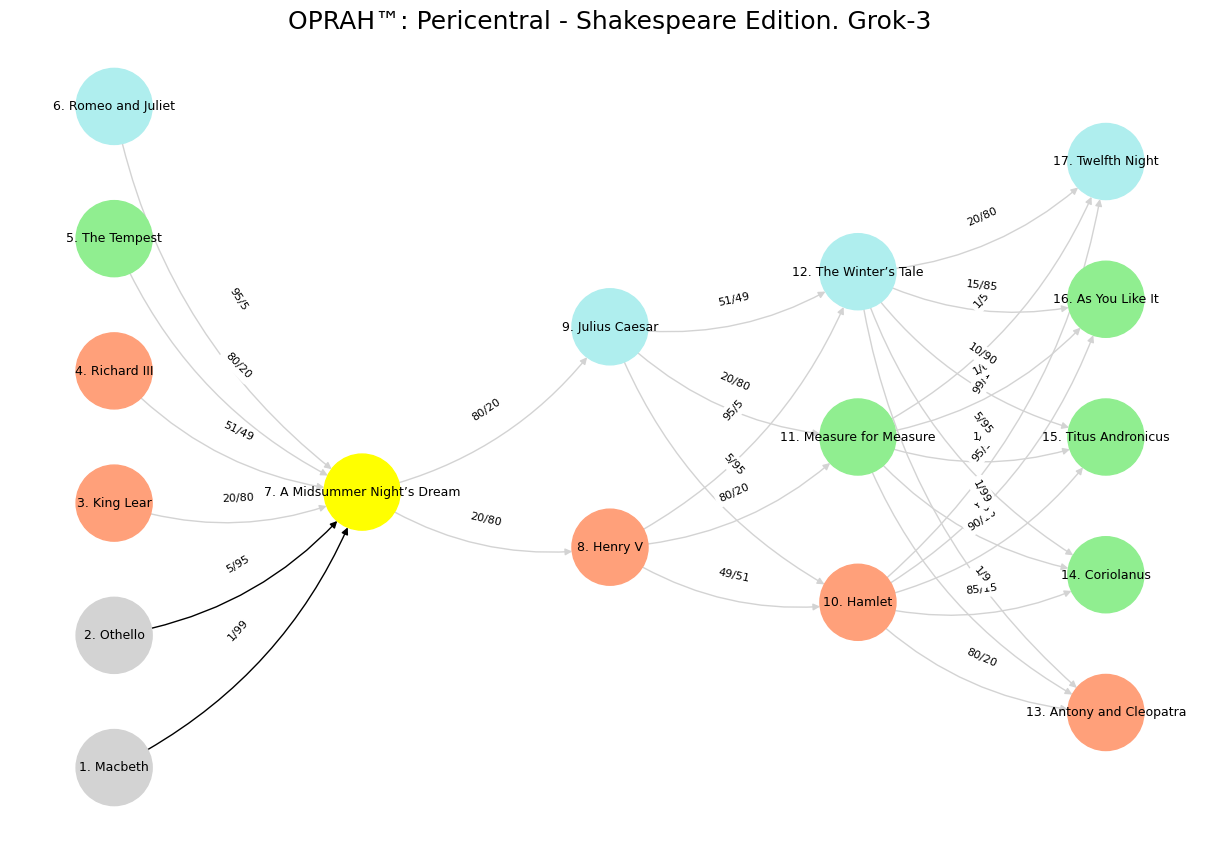Revolution#
+ Expand
- What makes for a suitable problem for AI (Demis Hassabis, Nobel Lecture)?
- Space: Massive combinatorial search space
- Function: Clear objective function (metric) to optimize against
- Time: Either lots of data and/or an accurate and efficient simulator
- Guess what else fits the bill (Yours truly, amateur philosopher)?
- Space
- Intestines/villi
- Lungs/bronchioles
- Capillary trees
- Network of lymphatics
- Dendrites in neurons
- Tree branches
- Function
- Energy
- Aerobic respiration
- Delivery to "last mile" (minimize distance)
- Response time (minimize)
- Information
- Exposure to sunlight for photosynthesis
- Time
- Nourishment
- Gaseous exchange
- Oxygen & Nutrients (Carbon dioxide & "Waste")
- Surveillance for antigens
- Coherence of functions
- Water and nutrients from soil
Colonialism was never merely a transfer of power; it was an epistemic and structural sabotage—an intentional perforation of the ship a people had spent centuries building to navigate their own seas. Its violence lay not only in plunder but in dismantling indigenous systems of meaning, governance, economy, ecology, and cosmology. It disrupted the hull of language, belief, and continuity, only to return later with lifeboats bearing flags of “modernity,” “development,” and “aid.” These lifeboats, often too small and ill-suited to the original vessel’s purpose, came with conditions: join the global convoy, adopt the Western compass, forget your celestial navigation. Accept rescue, but first, admit you were sinking.

King Lear. The senile bequest motive at the outset makes it an endearing classic. but the plot gets messy. what do folks thing about it? Perhaps reality is that messy, with orthogonal plots unfolding to determine the outcome?
History books have too often depicted this dynamic in sterile terms: the “civilizing mission,” the “scramble,” the “mandate.” But this language itself is part of the illusion. The truth is that from Peru to the Punjab, from the Congo to the Coral Sea, the colonized were not adrift—until they were rammed. Whether through plantations, forced conversions, railroads built to extract rather than connect, or schools designed to produce mimic men, the colonial enterprise did not merely exploit existing systems—it unmade them. Then, when famine hit, or resistance rose, or the economy collapsed, the colonizer returned with “solutions.” Aid. Loans. Development programs. IMF conditionalities. “Progress.” These were not apologies. They were extensions of control, dressed in lifeboat white.
Take economics. The pre-colonial Swahili coast, the Indian Ocean trade networks, the Ashanti gold circuits, the Silk Road—all functioned with complex local logics long before European interference. But with colonization came monocultures, cash crops, and currencies tied to distant empires. Whole ecologies were rewritten. The Bengal famine was not a natural disaster; it was a failure of imperial logistics and racialized triage. Uganda was not lacking governance—it had too many competing colonial chiefs, each installed to fracture, not unify. The ship was scuttled deliberately. Then came the lifeboats of Bretton Woods, of “economic liberalization,” of foreign expertise with spreadsheets and jargon but no local memory.
Dismiss your vows, your feigned tears, your flatt’ry; For where a heart is hard they make no batt’ry.” Source: Venus & Adonis
In the realm of the spiritual, too, the holes were metaphysical. Missionaries condemned animist traditions as demonic while rebranding their own symbolic violence as salvation. Ancestral knowledge—interwoven with herbal medicine, cosmology, ecology, and story—was either criminalized or trivialized. The colonizer’s God came not to coexist, but to convert, replacing complex sacred systems with a binary of sin and redemption. And once the holy trees were cut and the temples turned into churches, came the NGOs and trauma counselors to offer healing—without acknowledging who caused the wound.
Even culture, language, and identity were not spared. The colonizer’s education system taught the colonized to mistrust their own tongues, to memorize foreign kings, and to quote Shakespeare instead of their grandmothers. This was not enlightenment; it was erasure. Today, the life raft is the scholarship to Oxford, the TED Talk, the diversity grant. It comes with applause, but often asks that you tell your story in the colonizer’s language, in the format they understand, within the timelines they fund. The ship remains at the bottom of the sea, unexcavated.
Show code cell source
import numpy as np
import matplotlib.pyplot as plt
import networkx as nx
# Define the neural network layers with Shakespeare's plays
def define_layers():
return {
'Suis': ['Macbeth', 'Othello', 'King Lear', 'Richard III', 'The Tempest', 'Romeo and Juliet'],
'Voir': ['A Midsummer Night’s Dream'],
'Choisis': ['Henry V', 'Julius Caesar'],
'Deviens': ['Hamlet', 'Measure for Measure', 'The Winter’s Tale'],
"M'èléve": ['Antony and Cleopatra', 'Coriolanus', 'Titus Andronicus', 'As You Like It', 'Twelfth Night']
}
# Assign colors to nodes (retained from original for consistency)
def assign_colors():
color_map = {
'yellow': ['A Midsummer Night’s Dream'],
'paleturquoise': ['Romeo and Juliet', 'Julius Caesar', 'The Winter’s Tale', 'Twelfth Night'],
'lightgreen': ['The Tempest', 'Measure for Measure', 'Coriolanus', 'As You Like It', 'Titus Andronicus'],
'lightsalmon': ['King Lear', 'Richard III', 'Henry V', 'Hamlet', 'Antony and Cleopatra'],
}
return {node: color for color, nodes in color_map.items() for node in nodes}
# Define edge weights (unchanged from original)
def define_edges():
return {
('Macbeth', 'A Midsummer Night’s Dream'): '1/99',
('Othello', 'A Midsummer Night’s Dream'): '5/95',
('King Lear', 'A Midsummer Night’s Dream'): '20/80',
('Richard III', 'A Midsummer Night’s Dream'): '51/49',
('The Tempest', 'A Midsummer Night’s Dream'): '80/20',
('Romeo and Juliet', 'A Midsummer Night’s Dream'): '95/5',
('A Midsummer Night’s Dream', 'Henry V'): '20/80',
('A Midsummer Night’s Dream', 'Julius Caesar'): '80/20',
('Henry V', 'Hamlet'): '49/51',
('Henry V', 'Measure for Measure'): '80/20',
('Henry V', 'The Winter’s Tale'): '95/5',
('Julius Caesar', 'Hamlet'): '5/95',
('Julius Caesar', 'Measure for Measure'): '20/80',
('Julius Caesar', 'The Winter’s Tale'): '51/49',
('Hamlet', 'Antony and Cleopatra'): '80/20',
('Hamlet', 'Coriolanus'): '85/15',
('Hamlet', 'Titus Andronicus'): '90/10',
('Hamlet', 'As You Like It'): '95/5',
('Hamlet', 'Twelfth Night'): '99/1',
('Measure for Measure', 'Antony and Cleopatra'): '1/9',
('Measure for Measure', 'Coriolanus'): '1/8',
('Measure for Measure', 'Titus Andronicus'): '1/7',
('Measure for Measure', 'As You Like It'): '1/6',
('Measure for Measure', 'Twelfth Night'): '1/5',
('The Winter’s Tale', 'Antony and Cleopatra'): '1/99',
('The Winter’s Tale', 'Coriolanus'): '5/95',
('The Winter’s Tale', 'Titus Andronicus'): '10/90',
('The Winter’s Tale', 'As You Like It'): '15/85',
('The Winter’s Tale', 'Twelfth Night'): '20/80'
}
# Define edges to be highlighted in black (unchanged logic)
def define_black_edges():
return {
('Macbeth', 'A Midsummer Night’s Dream'): '1/99',
('Othello', 'A Midsummer Night’s Dream'): '5/95',
}
# Calculate node positions (unchanged)
def calculate_positions(layer, x_offset):
y_positions = np.linspace(-len(layer) / 2, len(layer) / 2, len(layer))
return [(x_offset, y) for y in y_positions]
# Create and visualize the neural network graph (unchanged logic)
def visualize_nn():
layers = define_layers()
colors = assign_colors()
edges = define_edges()
black_edges = define_black_edges()
G = nx.DiGraph()
pos = {}
node_colors = []
mapping = {}
counter = 1
for layer in layers.values():
for node in layer:
mapping[node] = f"{counter}. {node}"
counter += 1
for i, (layer_name, nodes) in enumerate(layers.items()):
positions = calculate_positions(nodes, x_offset=i * 2)
for node, position in zip(nodes, positions):
new_node = mapping[node]
G.add_node(new_node, layer=layer_name)
pos[new_node] = position
node_colors.append(colors.get(node, 'lightgray'))
edge_colors = []
for (source, target), weight in edges.items():
if source in mapping and target in mapping:
new_source = mapping[source]
new_target = mapping[target]
G.add_edge(new_source, new_target, weight=weight)
edge_colors.append('black' if (source, target) in black_edges else 'lightgrey')
plt.figure(figsize=(12, 8))
edges_labels = {(u, v): d["weight"] for u, v, d in G.edges(data=True)}
nx.draw(
G, pos, with_labels=True, node_color=node_colors, edge_color=edge_colors,
node_size=3000, font_size=9, connectionstyle="arc3,rad=0.2"
)
nx.draw_networkx_edge_labels(G, pos, edge_labels=edges_labels, font_size=8)
plt.title("OPRAH™: Pericentral - Shakespeare Edition. Grok-3", fontsize=18)
plt.show()
visualize_nn()


Fig. 16 Fractal Scaling. So we have CG-BEST cosmogeology, biology, ecology, symbiotology, teleology. This maps onto tragedy, history, epic, drama, and comedy. It’s provocative!#
Geographically, the damage is planetary. Colonization industrialized extraction—mines in Katanga, rubber in the Amazon, opium in China. The Anthropocene was not born from human activity in general, but from a specific mode of European imperial capitalism unleashed on the global South. Even climate change, the great planetary emergency, is distributed along colonial lines. The South burns and floods, while the North funds climate resilience projects with metrics and dashboards, never asking why those places became so vulnerable in the first place. The ship’s hull is now the Earth itself, breached and overheating. The lifeboats are solar panels manufactured in distant factories, sold with greenwashed fanfare.
And yet, perhaps most insidious is how the lifeboat is romanticized. The white savior industrial complex depends on it. Humanitarianism becomes a career, disaster becomes data, and the rescued must perform gratitude. Resistance is framed as ingratitude, or even terrorism. Indigenous resurgence is tolerated only when symbolic, never when systemic. You may wear your beads, speak your dialect on Heritage Day, but don’t ask for land back. Don’t question the map. Don’t build a new ship.
So what’s left? Not despair, but clarity. Colonialism was not a storm; it was an act of sabotage. The lifeboats were not rescue but redesign. The challenge now is not to keep floating in borrowed vessels, but to dive—deep—recover the shipwreck, learn from its architecture, its materials, its star charts. And then, to rebuild. Not as nostalgia, but as prophecy. Not as return, but as re-invention. Not in isolation, but in solidarity with all others whose ships were sunk, whose oceans were renamed, whose ports were militarized. There is no going back to before—but there is a way forward that refuses the false mercy of the lifeboat, and dares instead to imagine seaworthiness on our own terms.

